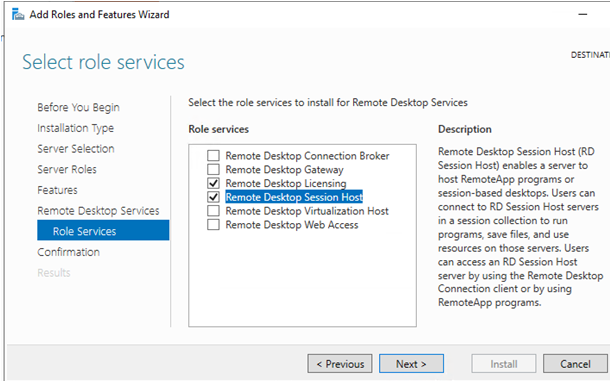

- #Windows server 2012 r2 remote desktop services web access how to
- #Windows server 2012 r2 remote desktop services web access install
- #Windows server 2012 r2 remote desktop services web access manual
- #Windows server 2012 r2 remote desktop services web access full
#Windows server 2012 r2 remote desktop services web access full
In a full deployment we can have the following roles:Ĭonnects or reconnects a client device to RemoteApp programs, session-based desktops and virtual desktops.Įnables users to connect to resources provided by session collections and virtual desktop collections by using the Start menu or a web browser.Ī server running the Remote Desktop Protocol Server. When designing Windows 2012, Microsoft has put a lot of effort in centralising all the configuration panels for a Remote Desktop Services deployment in one central management console, they even have implemented deployment wizards to make the whole installation process easy to handle.Ī Microsoft Windows 2012/R2 Remote Desktop Services deployment is divided into several roles which can be installed on separate servers.
#Windows server 2012 r2 remote desktop services web access manual
In fact, this is usually the preferred method when performing load balancing as it keeps things simple, and allows the ACE to perform application layer balancing.This article outlines one possible way to set-up a remote desktop services farm in Windows 2012 R2.īefore Windows 2012 came on the scene, setting up remote desktop services involved a lot of manual labour, installing several components managed in a heap of management snap-ins.
#Windows server 2012 r2 remote desktop services web access install
Or if you decide to run with a SAN then you will need to specify the SAN in the certificate request.Īnother option would be to install a single certificate on the Cisco ACE in order to perform SSL termination on that device instead of the RD Web Servers. If you decide to run with a wildcard certificate, then you simply specify your domain as *.your.domain and purchase it from the external CA using their wildcard purchasing plan. If for whatever reason you really do need different domain names, then you will create a single certificate request using your preferred method. Simply create the certificate request as you normally would, and install the certificate on both servers - just ensure that the cert is licensed for use on 2 servers when you purchase it.

Using a wildcard / SAN certificate is only necessary if you intend on accessing one or both of the servers using different names. The help from MS I have gotten via docs and forum seems to assume we are using an internal AD CA or a Gateway, neither of which we are using (We are requiring VPN for off site access for now).ĭo you actually need your two RD Web Access servers to use different domain names? Seeing as this is a load balance / fail-over scenario, then normally you would install the same certificate on both servers.
#Windows server 2012 r2 remote desktop services web access how to
My question is, how do I go about requesting the certificate now? Other than using a wildcard or SAN cert (to include the "friendly" name we are using) I am not sure how to start this process.ĭo I request a cert from one of the RD Web Access servers, export, and use it for both of them? Or do I request one from each with the SAN/wildcard as part of the request? Or, am I completely off track here? I am only familiar with basic HTTPS web cert requests so this is all a mystery to me. Our production deployment will have 2 RD Web Access servers behind a Cisco ACE for failover and load balancing. In the past I have requested a single cert using an external CA (via an IIS 7 cert request), installed it, and then exported it into the *.pfx format to use. We are planning on a deployment of Remote Desktop Sservices (Windows Server 2012 R2) with 2 RD Web Access Servers.


 0 kommentar(er)
0 kommentar(er)
